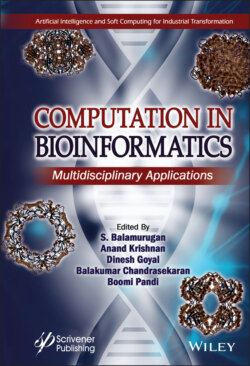Читать книгу Computation in BioInformatics - Группа авторов - Страница 15
1.2.1 Identification of the Target Protein/Enzyme
ОглавлениеBefore designing a novel synthetic drug, one needs to know all about the signaling pathways which lead to the disease. A novel drug needs to be designed in such a way that can interact with the target protein without interfering with normal metabolism. The most conventional method is to block the activity of the protein with a small molecule which can be the prospective drug. Virtual screenings of the target for compounds that can bind and inhibit the protein/enzyme are now performed using various bioinformatics softwares. Another strategy is to find other proteins which can regulate the activity of the target by binding and forming a complex, thereby controlling the disease.
PDB: The Protein Data Bank (PDB) is the repository of information about the 3D structure structures of biological molecules which include nucleic acids and proteins (https://www.rcsb.org). The main function of this database is to provide 3D structural data of all the organisms which includes yeast, bacteria, plants, and other animals including humans. Techniques such as X-ray crystallography, electron microscopy, and nuclear magnetic resonance (NMR) spectroscopy help in extracting the information of the 3Dstructure of the macromolecules [10].
Swiss Target Prediction: It is a web server which can accurately predict the targets of bioactive molecules based on similarity measures with known ligands [11]. In this web server, the predictions can be carried out in five different organisms, and mapping predictions by homology. The SwissTargetPrediction server is easily is accessible and is free of charge without any registration (www.swisstargetprediction.ch)
SPPIDER: The SPPIDER protein interface recognition is a server that can be used to predict residues that needs to be in the putative protein interfaces by considering single protein chain with resolved 3D structure [12]. It can analyze protein-protein complex with given 3D structural information and can identify residues that are being in contact (http://sppider.cchmc.org/).
